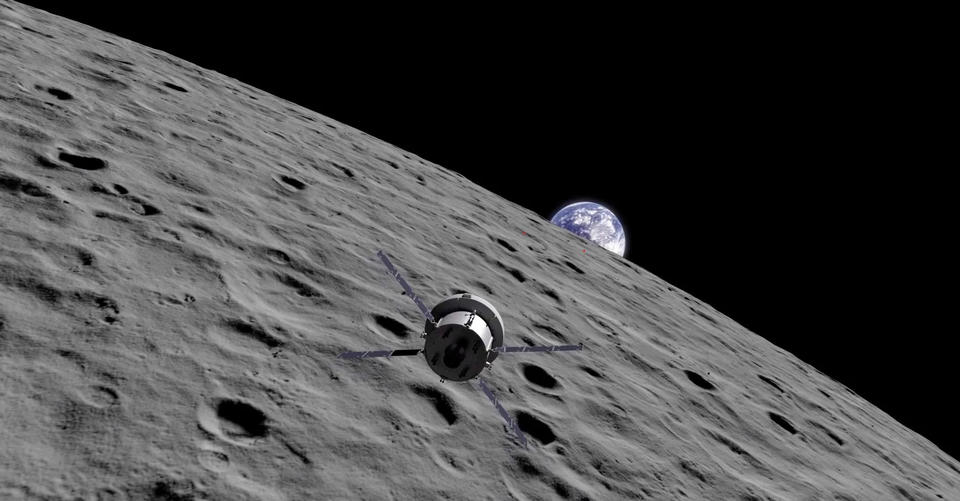
The lunar coordinate time system could serve as a foundation for developing a GPS-like navigation system on the Moon. This would be a critical piece of infrastructure for future lunar missions, supporting both crewed and robotic operations.
NASA
For decades, the Moon's subtle gravitational pull has posed a vexing challenge - atomic clocks on its surface would tick faster than those on Earth by about 56 microseconds per day. This extremely small difference doesn't seem like much, but it could disrupt the precise timing needed for important activities like spacecraft landings and communicating with Earth.
Now, researchers at the National Institute of Standards and Technology (NIST) have developed a plan for precise timekeeping on the Moon, paving the way for a GPS-like navigation system for lunar exploration. The research, published in The Astronomical Journal, focuses on defining a theoretical framework and mathematical models necessary for creating a lunar coordinate time system.
This innovation is crucial for NASA's ambitious Artemis program, which aims to establish a sustained human presence on the Moon and may be an important steppingstone for exploration of the cosmos.
Lunar Coordinate Time
GPS on Earth relies heavily on precise timekeeping. Each satellite in the GPS constellation carries atomic clocks that are synchronized to a common time reference. By measuring the time it takes for signals from multiple satellites to reach a receiver, GPS can determine the receiver's position and time. However, implementing a similar system on the Moon, and relating it accurately to Earth's system, presents unique challenges due to the effects of relativity.
Einstein's theory of relativity states that gravity affects the passage of time. Time doesn't flow uniformly for everyone. For instance, on the Moon, where gravity is weaker than on Earth, clocks tick slightly faster. In addition, an observer on Earth measures time slightly differently than an observer on the Moon due to a number of gravity-related effects, including the Moon's orbit around Earth and Earth's orbit around the Sun. These effects can significantly impact precise navigation and communication over time.
To address this issue, NIST researchers have created a system to establish and implement lunar time that accounts for the Moon's unique gravitational environment. This system establishes a new master "Moon time" that serves as the timekeeping reference specifically for the entire lunar surface, similar to how Coordinated Universal Time (UTC) functions on Earth.
"It's like having the entire Moon synchronized to one 'time zone' adjusted for the Moon's gravity, rather than having clocks gradually drift out of sync with Earth's time," said NIST physicist Bijunath Patla.
"This work lays the foundation for adopting a navigation and timing system similar to GPS, which would serve near-Earth and Earth-bound users, for lunar exploration," said NIST physicist Neil Ashby.
The proposed system would be the first step in the development of a "lunar positioning system" that would include a highly precise network of clocks at specific locations on the Moon's surface and in lunar orbits. These precise atomic clocks in lunar orbit would function as the "satellites" of the lunar GPS network, providing accurate timing signals for navigation.
Precise navigation and positioning on the Moon could lead to more accurate landings and more efficient exploration for lunar resources. Without this "lunar GPS," landing and operating on the Moon would be like trying to navigate on Earth without any positioning system - you'd only have a rough idea of your location, making it extremely difficult to carry out complex operations or travel long distances accurately.
"The goal is to ensure that spacecraft can land within a few meters of their intended destination," Patla said.
The New Space Race
This breakthrough comes as nations worldwide renew their interest in lunar exploration. The Moon offers valuable scientific insights into the formation of our solar system and holds potential resources for future technologies, such as water ice, helium-3, and rare earth elements used in things like smartphones and computers.
Lunar coordinate time could be key for deeper space exploration as timekeeping may prove instrumental in coordinating complex missions and establishing an interplanetary navigation network.
"The proposed framework underpinning lunar coordinate time could eventually enable exploration beyond the Moon and even beyond our solar system," Patla said. "Once humans develop the capability for such ambitious missions, of course."
The work was funded in part by the National Aeronautics and Space Administration.
Paper: Neil Ashby and Bijunath R. Patla. A relativistic framework to estimate clock rates on the Moon. The Astronomical Journal. Published Aug. 12, 2024. DOI: 10.3847/1538-3881/ad643a






